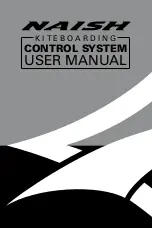
Aircraft Service Manual
Jabiru Aircraft
Pty Ltd
JTM001-1
J120, J160, J170, J200/J400, J230/J430, J250/J450 Variants
REVISION
1
Dated: Nov 2011
Issued By: SW
Page: 176 of 233
14
FUEL SYSTEM
14.1 DESCRIPTION
Refer to Figures below for system schematic details.
Two basic types of systems are used: a system where there is one fuel tank, fitted behind the seats
inside the cabin and a system with two main tanks
– one in each wing.
For systems with the tank inside the cabin:
-
The filler for the tank is located on the
pilot’s side of the fuselage
-
The tank is vented via a fitting on the belly of the aircraft.
-
The primary, mechanical fuel pump is fitted to the engine.
-
The secondary electric fuel pump and the fuel filter are fitted to the belly of the aircraft under the
tank itself.
-
The main fuel tank is not structural and is held in place with straps.
-
A single ON-OFF selector is fitted to the centre console between the seats.
For systems with the tanks inside the wings:
-
The fillers for the tanks are located on the upper surface of the wings.
-
The tank is vented via a fitting built into the fuel caps. Though i
n some cases a separate “sharks
fin” vent fitted to the cabin roof may be used instead.
-
The primary, mechanical fuel pump is fitted to the engine.
-
The secondary electric fuel pump and the fuel filter are fitted adjacent to the header tank. This
may be under the baggage shelf behind the seats (J160 family) or behind the sound curtain at
the rear of the cabin (J230 family). Kit built models may have both pump and filter mounted
inside a fiberglass housing fitted between the centre console and the firewall inside the cabin.
-
The main fuel tanks are structural and are integral parts of the wings.
-
A header tank is fitted. The tank may be located under the baggage shelf behind the crew seats
(J160 family), behind the sound curtain at the rear of the cabin (J230 family), under the front
passenger seat or behind the crew seats.
-
All aircraft are equipped with a drain sump in each tank. Some aircraft may also be equipped
with ga
scolators inside the cabin “B” pillar.
-
For most aircraft a single ON-OFF selector is fitted to the centre console between the seats. Kit-
built models may be equipped with taps on each wing tank instead.
-
Some models are equipped with fuel line sheathing and shaped external air vents to prevent
leaked fuel from entering the cabin.
-
Some models are equipped with a low fuel pressure warning switch & light. The switch is located
in the fuel line between the mechanical engine fuel pump and the carburettor.
Due to space constraints not all different variations are shown herein. When ordering spare parts
provide as must detail as possible
– part description, aircraft model, serial number etc to Jabiru to
ensure accurate part identification.
WARNING
Where secondary fuel valves are fitted between wing tanks and header tanks it is recommended
that they be secured in t
he “ON” position using electrical fuse wire during normal operations.
14.1.1 PRECAUTIONS
There are certain general precautions and rules concerning the fuel system which must be observed
when performing the operations and procedures in this Section.
1.
During all fuelling, defueling, tank purging and tank disassembly, ground the aircraft to avoid
static electricity sparks.
2.
Residual fuel draining from hose constitutes a fire hazard. Use caution to prevent the
accumulation of fuel when hoses are disconnected.
3.
Cap open hoses and cover connections to prevent the entrance of foreign matter.















































